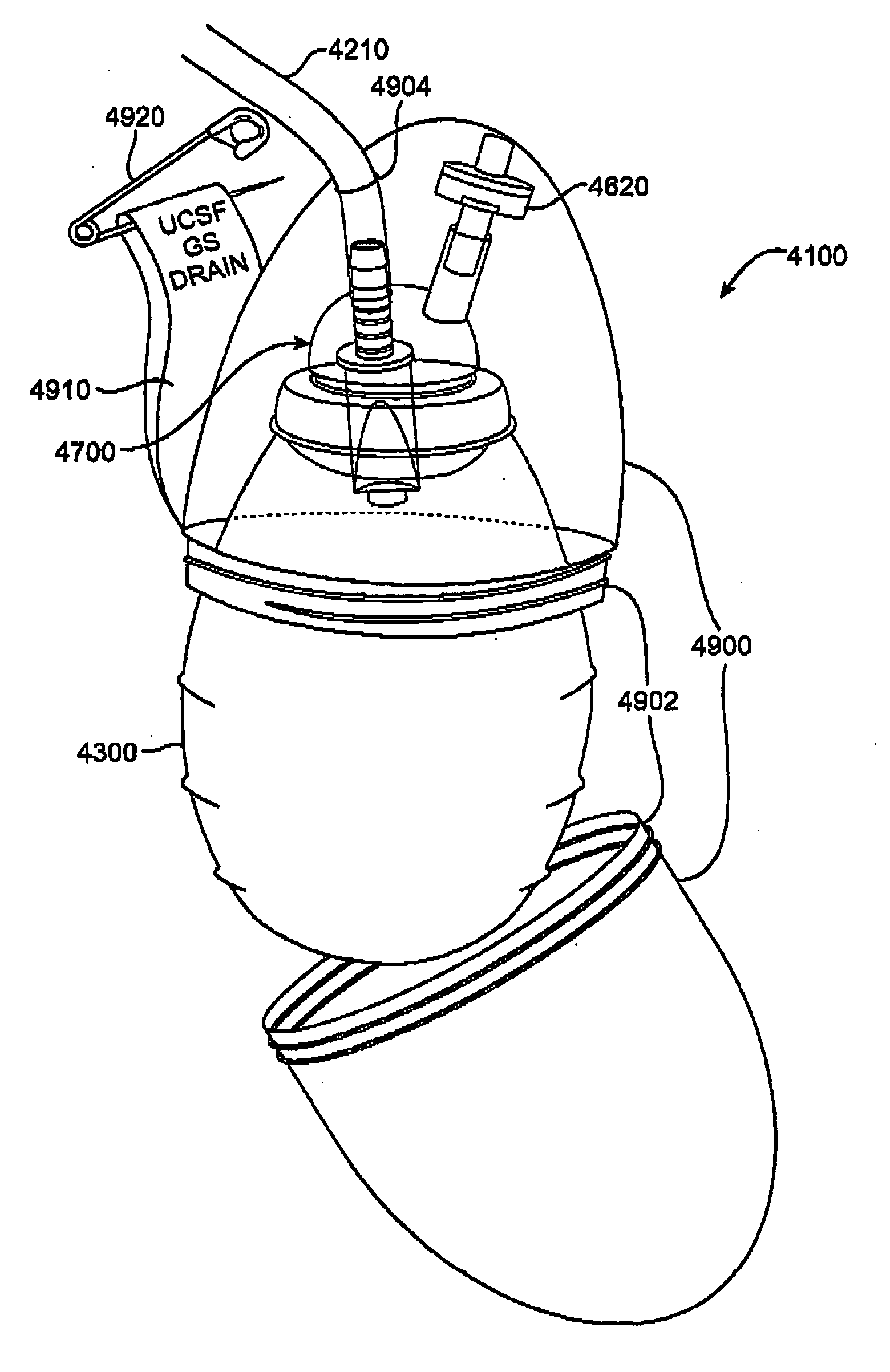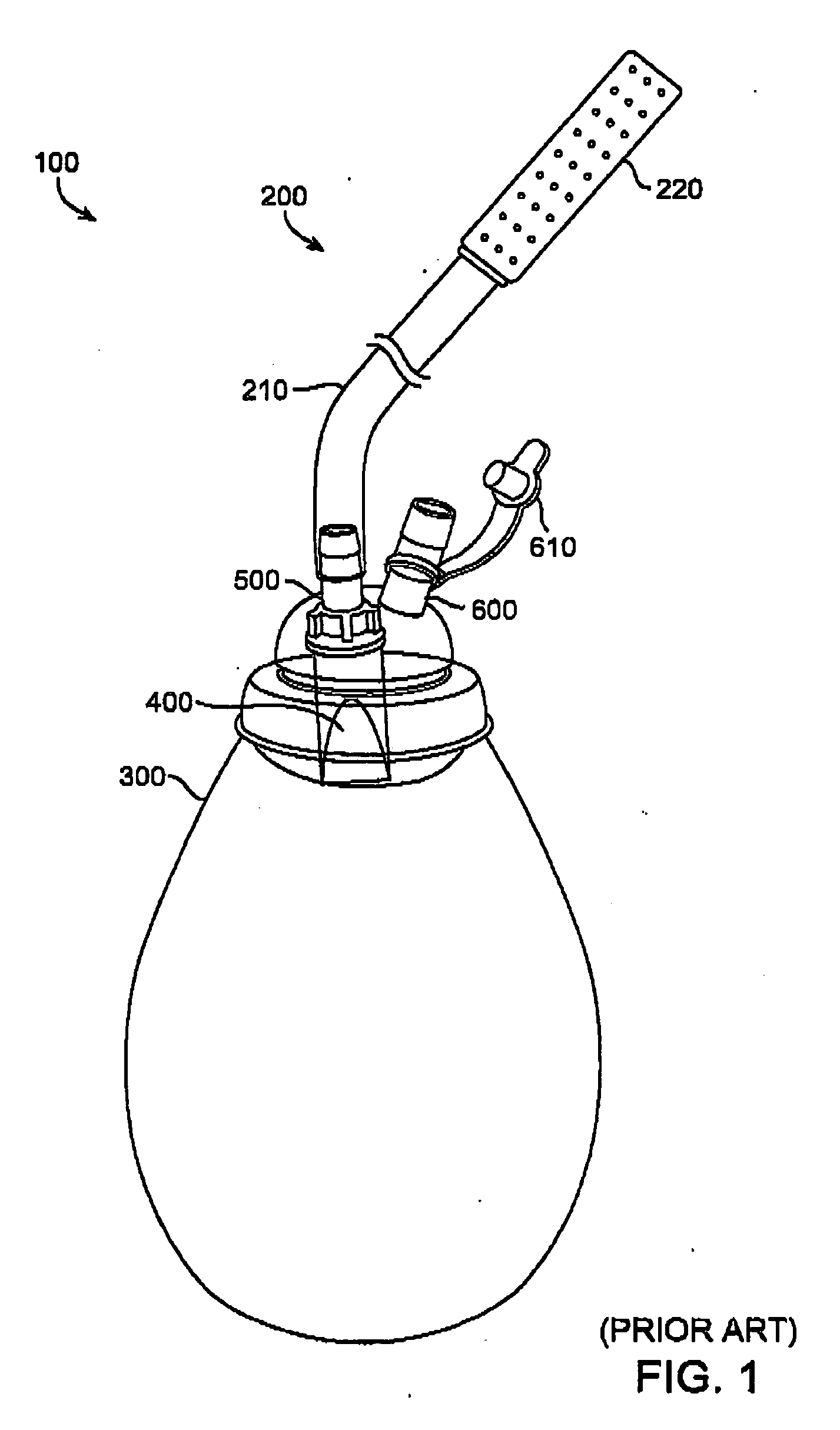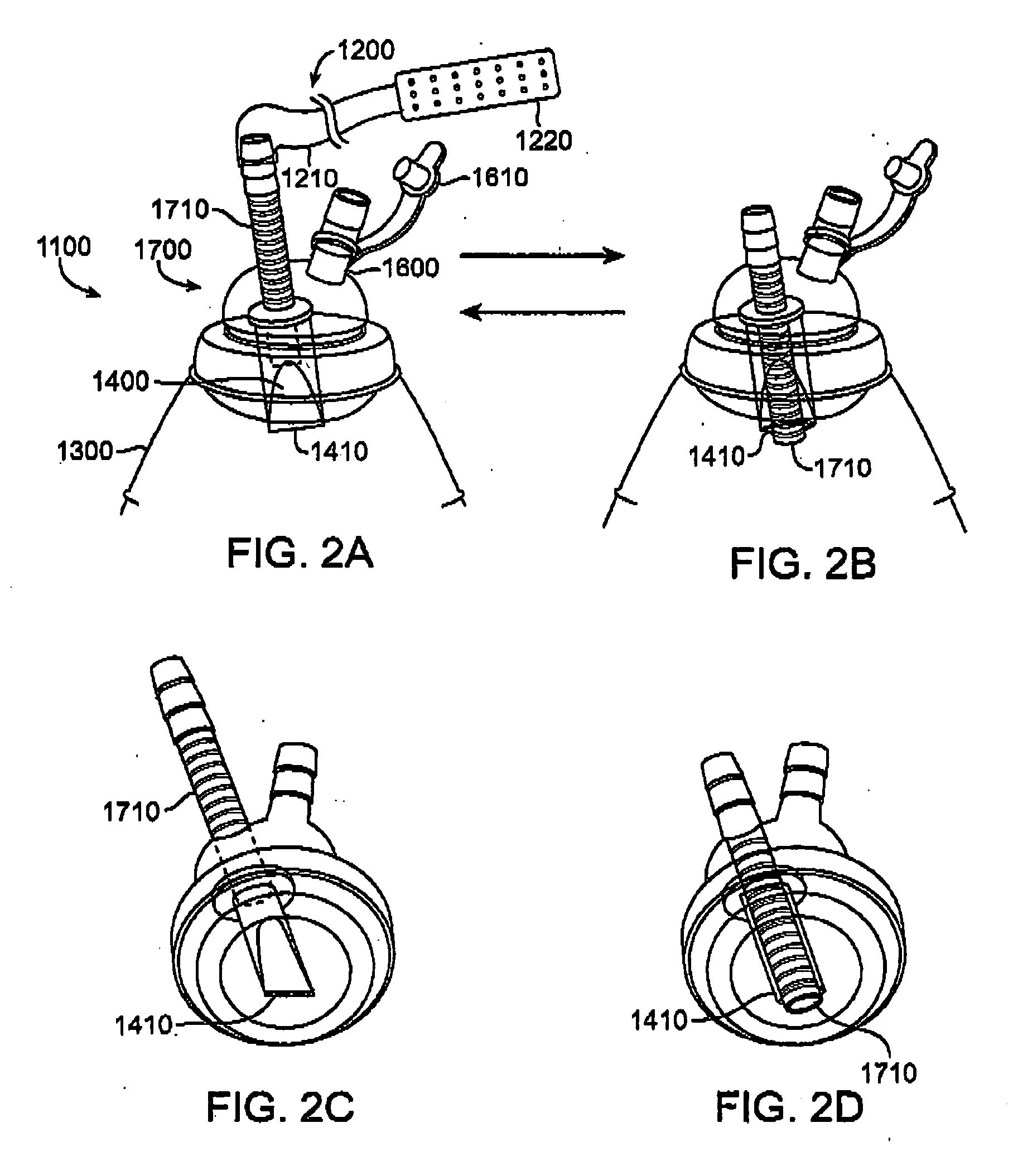Drainage devices and methods
a technology of suction device and draining device, which is applied in the direction of suction drainage container, intravenous device, other medical devices, etc., can solve the problems of not providing a mechanism by which an active drainage system can be efficiently converted to a passive one, and the suction characteristics remain poorly understood, so as to minimize the pain experienced by the patient, efficiently release, and reduce the effect of pain
- Summary
- Abstract
- Description
- Claims
- Application Information
AI Technical Summary
Benefits of technology
Problems solved by technology
Method used
Image
Examples
Embodiment Construction
[0022] Turning now to the drawings, FIG. 1 illustrates a currently known drainage device 100 such as a closed system drainage suction device, which includes an input passage 200 having a drainage tube 210 and a drain 220. Drainage device 100 also includes a container 300, a one-way valve 400, a valve port 500, and a venting port 600 having a plug 610. As shown here, suction bulb reservoir or container 300 often has two ports 500 and 600. Venting port 600 is typically a tube-shaped lumen which connects the inside of container 300 to the outside. Venting port 600 can be plugged or unplugged with an attached plug 610. Valve port 500 can also be a tube-shaped lumen, across which lies one-way valve 400, which in many cases is a Heimlich valve. One-way valve 400 is oriented to allow one-way flow of fluid toward container 300. Surgical drainage tube 210, which can be a soft plastic tube exiting the patient's wound, connects drain 220 with valve port 500.
[0023] In many instances, drain 220...
PUM
 Login to View More
Login to View More Abstract
Description
Claims
Application Information
 Login to View More
Login to View More - R&D
- Intellectual Property
- Life Sciences
- Materials
- Tech Scout
- Unparalleled Data Quality
- Higher Quality Content
- 60% Fewer Hallucinations
Browse by: Latest US Patents, China's latest patents, Technical Efficacy Thesaurus, Application Domain, Technology Topic, Popular Technical Reports.
© 2025 PatSnap. All rights reserved.Legal|Privacy policy|Modern Slavery Act Transparency Statement|Sitemap|About US| Contact US: help@patsnap.com



